Hebei Hanglun Technology Co., Ltd., The largest titanium bicycle manufacturer in the world, joins hands with Farsoon 3D printing to ride the "new track".
Release time:
2024-02-02
Since the birth of mankind, we have been in constant pursuit of the dual extension of our feet and horizons, our bodies and our minds. From transportation tools to professional bicycles,behind each new invention, there are all witnesses of our desire to go to the unknown and then explore the world.
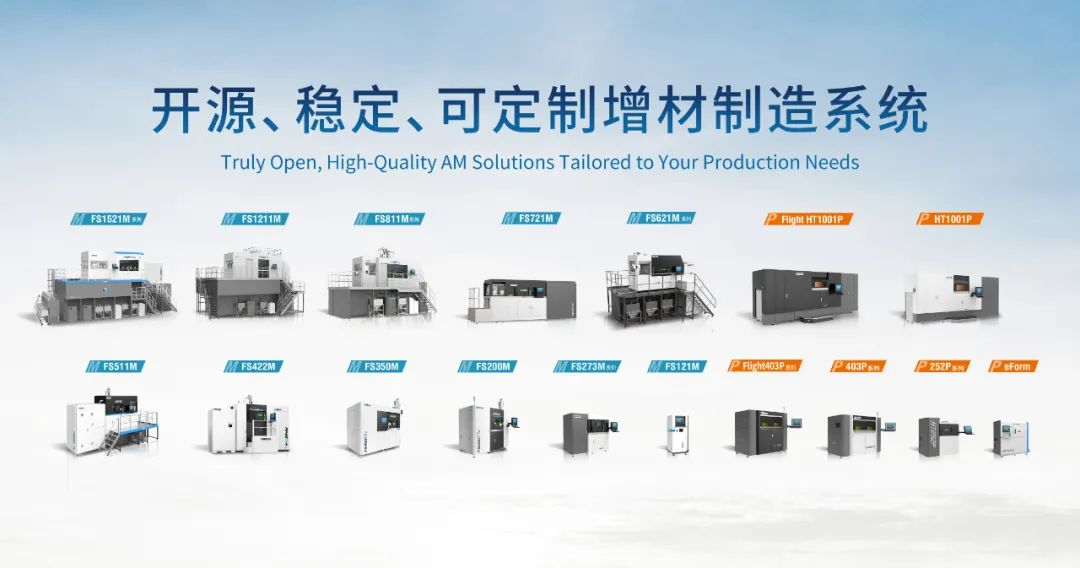
In modern society, bicycles can be used for sports, for commuting, or for cycling to explore the boundaries of living space. The introduction of metal 3D printing technology provides important advantages such as optimized design, rapid prototyping, small batch production, personalized customization and weight reduction, which makes everyone pays more attention to the relationship between people and the environment, and technology, and take practical action to pass on the concept of green and environmental protection and sustainable development.
Titanium combines light weight, high strength, good toughness and corrosion resistance, so it is widely used in aerospace, automotive industry, medical science, 3C and other fields. Hebei Hanglun Technology Co., Ltd. successfully have applied titanium welding technology to the production of bicycle frames, handlebars and other components through continuous research and testing. In 1992, we independently developed the first titanium bicycle in China and founded Hi-Light, the first titanium bicycle brand in China.
For now, Hebei Hanglun Technology Co., Ltd. is the world's largest titanium bicycle manufacturer, where most of the world's famous titanium brand bicycle frames are produced. The annual production capacity of titanium bicycle frames is nearly 20,000 pieces, and the domestic market share reaches nearly 80%. And the overseas market covers North America, Europe, Southeast Asia and other countries and regions. It is a leader in the production and research and development of high-end bicycles.
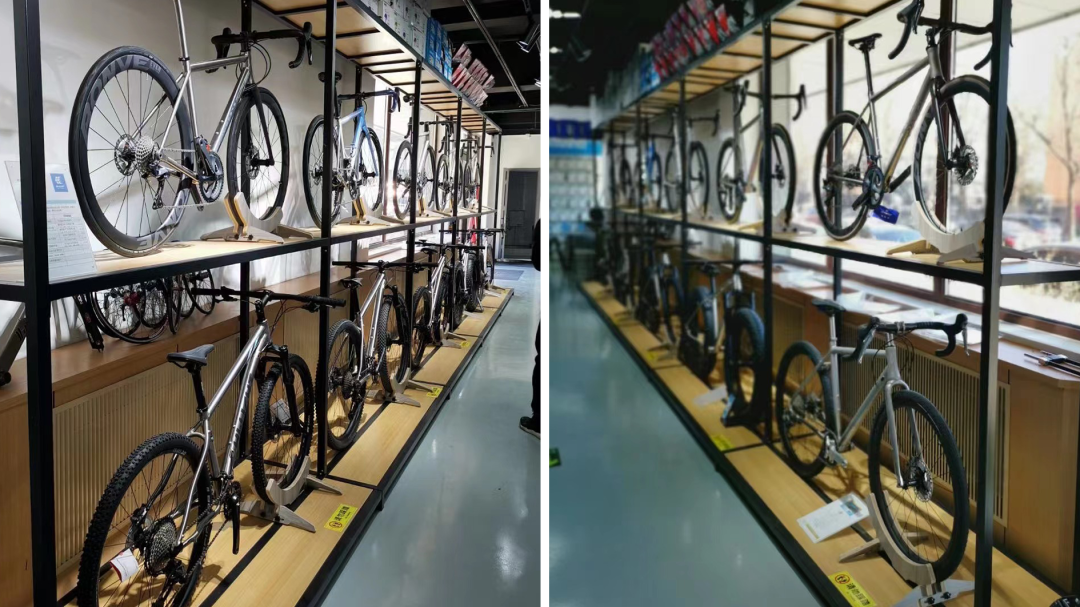
01 The annual output of 3D printed titanium bicycle parts will exceed 50,000 pieces
The traditional processing of titanium is extremely difficult. Due to the special structure of the titanium, it must be welded in place at one time, and it must be welded at the most precise and perfect angle from the beginning. Once the welding is completed, there is almost no room for correction. As for the coating part, because of its low molecular adhesion, result in the colour is not easy. These process difficulties test the experience and skills of the craftsman, which significantly increase the manufacturing cost, and is reflected in the high price of the product.
In 2023, the company adopted the Farsoon High-Tech 4 laser metal 3D printing solution FS350M, which have achieved the perfect combination of high-end customization and mass production.
“3D printing is a high-end technology and a major trend in the development of the entire bike industry, which is starting a prairie fire with the momentum of the stars, and the perfect combination of traditional precision casting.
At present, we use precision casting for mass production and 3D printing for small batch customized products. It can take into account the needs of bicycle product weight reduction, integrated forming of complex structures, high-end customization, etc., meanwhile it can avoid the high manufacturing cost of single-piece or small-batch products, environmental pollution and other issues, effectively shorten product delivery time and make production more efficient and convenient. ”
Yanpeng, Yang
Vice General Manager of Hebei Hanglun Technology Co., Ltd.
According to the plan, the annual output of titanium bicycle parts produced by Hanglun Technology with 3D printing technology will exceed 50,000 pieces, which will be applied to multiple models of bicycles, aiming to provide global customers with better quality, higher strength, lighter weight and more durable titanium bike products.
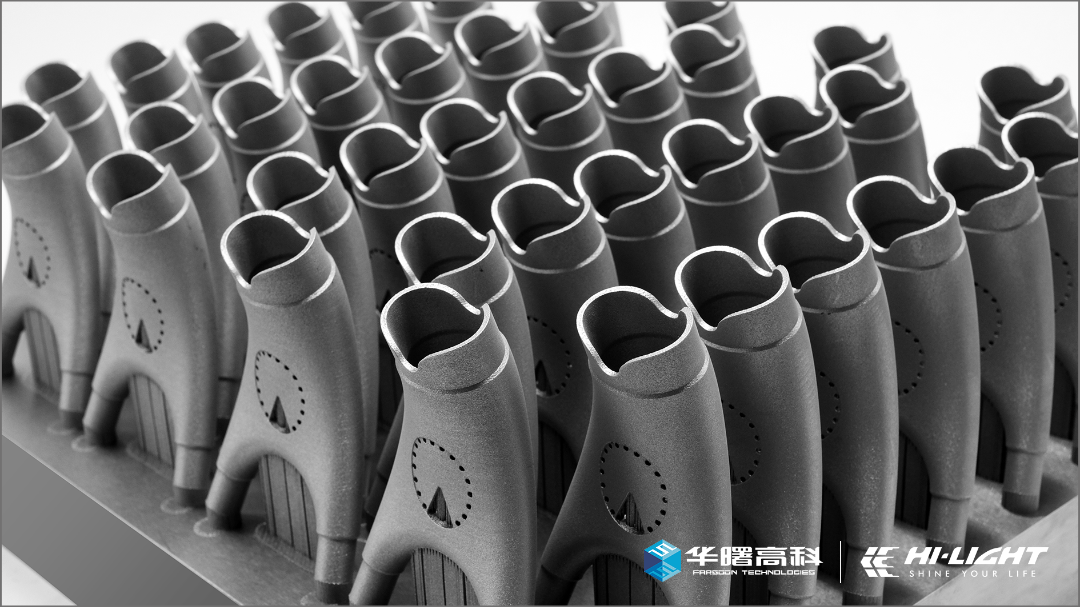
02 Acceleration of design iteration and improvement of production efficiency
For consumer products, shortening the production cycle will speed up the brand's response to the market. In the design and development of products, 3D printing is especially well suited to the rapid iteration of design prototypes, which not only brings design freedom to titanium bicycle parts, but also accelerates the pace of product launches.
Traditional methods require multiple processes such as precision casting, CNC machining, wire cutting, welding, correction and surface treatment. 3D printing can realize the integrated formation of complex structures of titanium bicycle parts, which can save materials, reduce costs, and avoid the potential risks caused by welding of complex structures, such as deformation, fatigue damage caused by welding residual stress, and inaccurate threaded connections, etc.
Titanium Bike Parts Seat Stay Yoke
Equipment: FS350M-4
Time: 24h
Material: Ti6Al4V
The 3D printed bicycle seat stay yoke is produced using Farsoon FS350M-4 equipment. It takes only 24 hours to print 38 entire pages at one time, which is more than 60% more efficient than traditional casting. It adopts a flat aerodynamic tube design. With 3D printed integrated formation and made of titanium, these yokes are not only very strong and durable, but also very light, which can reduce the impact of wheelset on the frame and improve riding comfort.
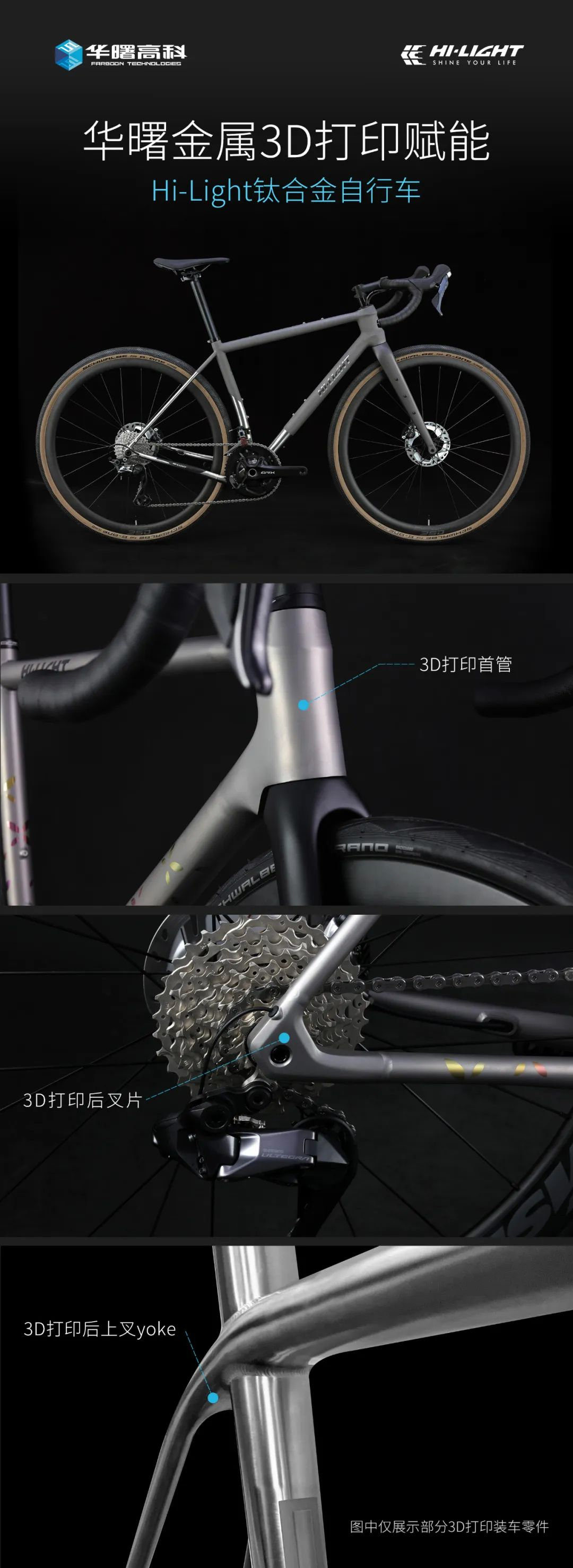
03 Topology optimization to reduce weight and ensure a longer service life
The density of titanium alloy is generally around 4.51g/㎝³, which is only 60% of steel. The titanium bicycle frames with traditional welding methods are heavier. By combining topology optimization with 3D printing, its weight can be reduced to 1.4kg, and it has successfully passed the ISO4210-6 impact and fatigue testing, which help cyclists increase their speed and reduce physical exertion during distance cycling.
At the same time, when using the same titanium material, the strength and elongation of 3D printed titanium is higher than those of ordinary forged parts . After the performance tests, titanium bicycle parts printed with Farsoon FS350M-4 have excellent mechanical properties. Their tensile and yield strength and elongation at break reach 1035MPa, 998MPa and 13.5% respectively, which shows that 3D printing realize a longer lifetime for the bicycle parts.
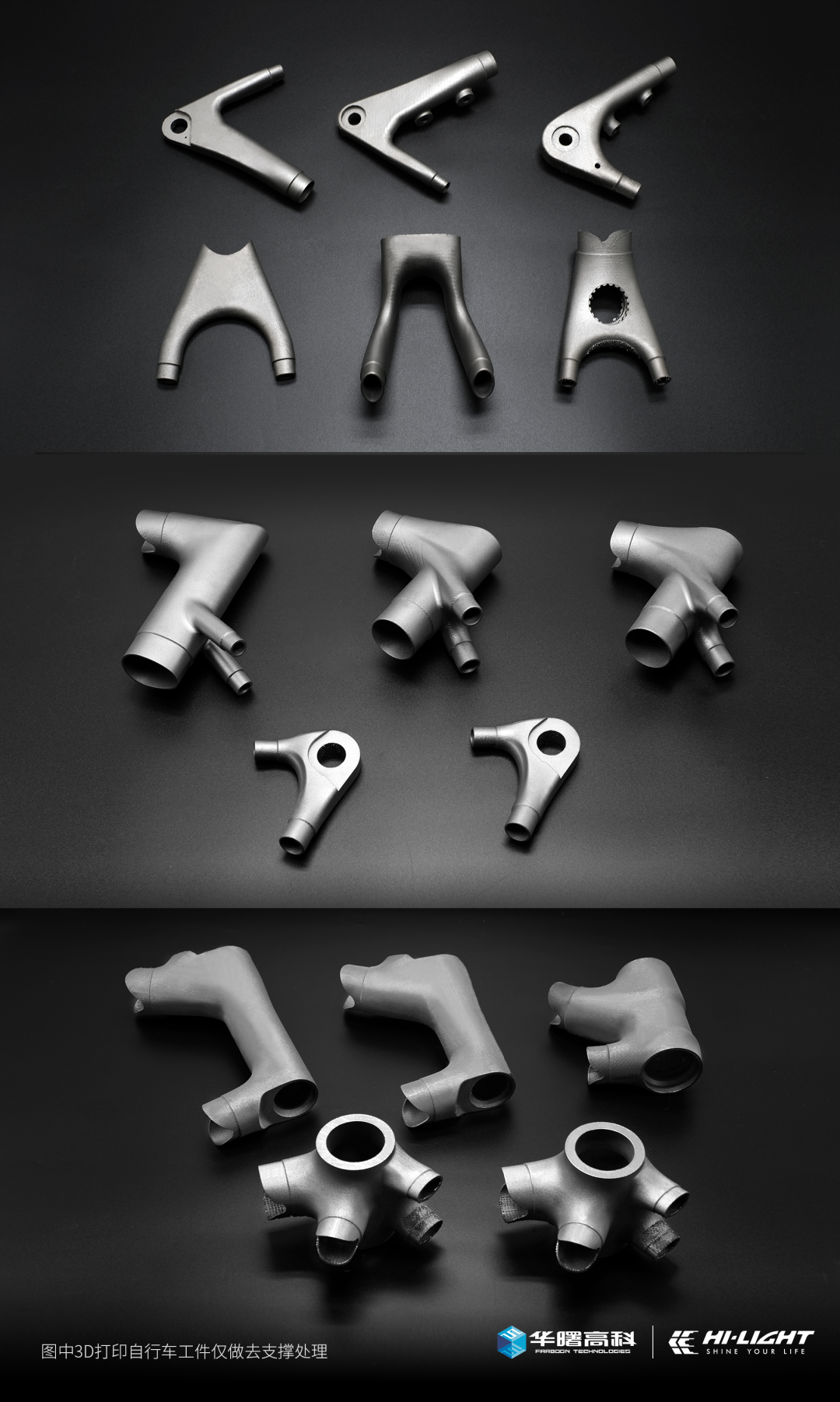
04 Winning multiple awards, 3D printing empowering high-end brands
In recent years, Hanglun has been focusing on the sports characteristics of bicycles to minimize wind resistance during the design, manufacturing and assembly processes of the frame. Its cutting-edge technology includes the design of internal cable routing and shaped tubes, which can hide all the cable routings, including the brake system and shifting system, etc., inside the bicycle frame and improve riding efficiency. At present, Hanglun has nearly 20 patents, and the design and manufacturing schemes have won many big awards such as Innovation Award, Gold Award, and Best Industrial Design Award.
The introduction of 3D printing technology shows the classic inheritance of Hi-Light brand by Hanglun Technology and continuous research and innovation. In the future we will continue to meet the diversified needs of consumers with 3D printing "highly customized" product highlights to empower high-end brands.
With the development of technological innovation, 3D printing has been influencing people's lifestyle at an unprecedented speed. The empowerment of Farsoon for titanium bicycle frames and parts of Hanglun Technology is not only a collision of metal 3D printing technology and bicycle production technology, but also a breakthrough innovation of the existing modes of transportation. In the future, we will continue to deepen our cooperation, and ride on the "new track" of science and technology hand in hand.

Previous:
: Next

